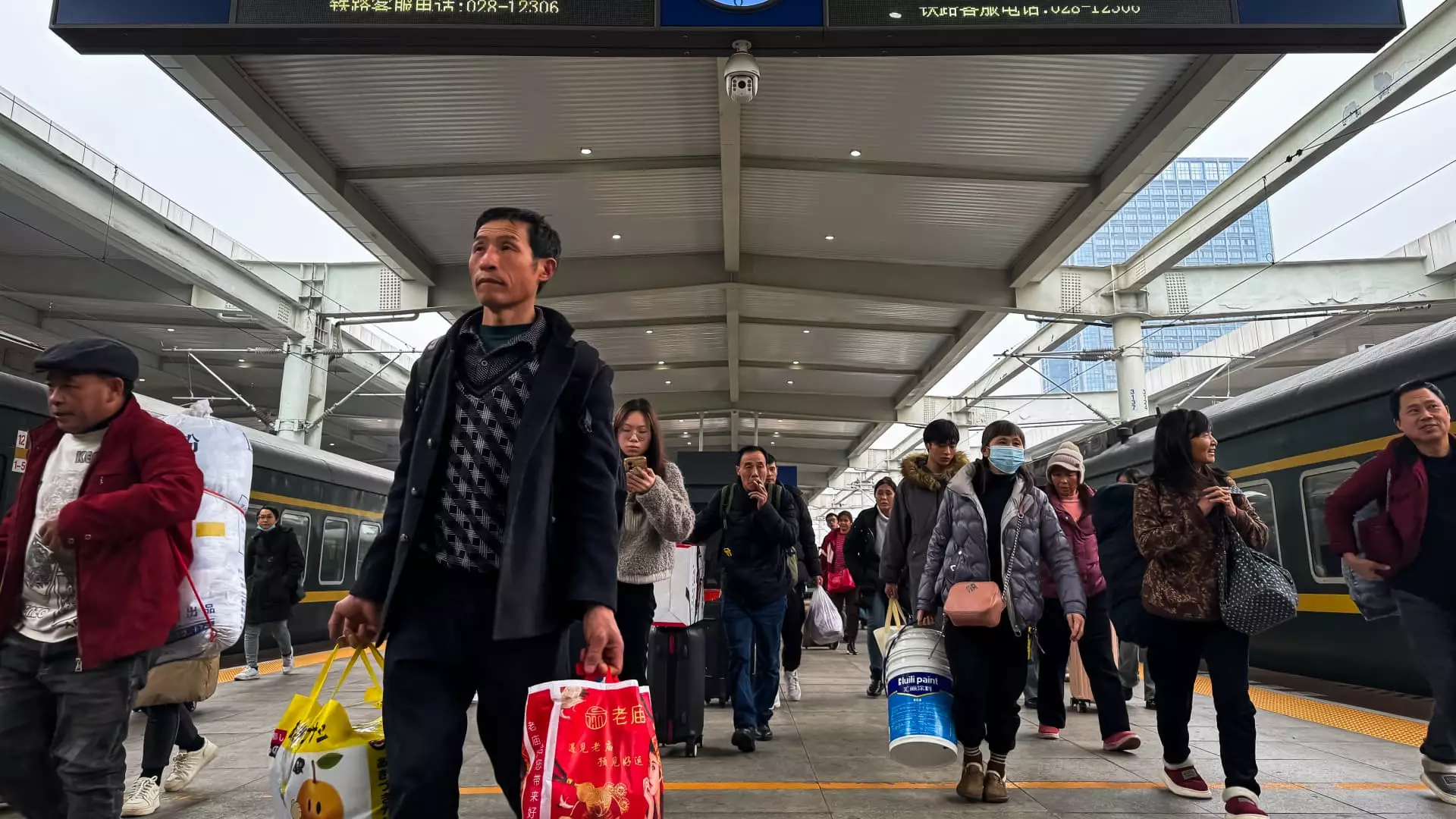As China navigates the murky waters of its economic landscape, investors and policymakers alike are anxious for tangible signs of recovery. Despite promises of government support, recent data indicate that the anticipated economic turnaround has yet to manifest. Multiple rounds of interest rate cuts and stimulus announcements have failed to galvanize a sufficient rebound, with crucial details regarding fiscal support still shrouded in uncertainty until the annual parliamentary meeting in March. The upcoming release of official GDP figures for 2024 is poised to spotlight the ongoing struggle and set the tone for the year ahead.
The BlackRock Investment Institute’s latest report paints a picture of caution as fundamental structural challenges continue to cast a shadow over China’s growth prospects. While the firm maintains a moderate overweight position in Chinese stocks, it signals readiness to increase its stake if the economic landscape changes favorably. This sentiment underscores a critical reality: the foundational elements underpinning China’s economy remain unstable, steeped in complexities that hinder immediate recovery.
Perhaps one of the most pressing concerns is the decline in domestic demand, a clear indicator of consumers’ hesitance to spend. Consumer prices recently registered a meager rise of only 0.5%—the slowest increase in over a decade—after accounting for volatile food and energy prices. This stagnation reflects a broader trend of weak consumer spending and inadequate foreign investment, intensifying fears of deflation. According to Yin Yong, Beijing’s mayor, sectors are experiencing pressure, particularly as consumer confidence struggles to rebound.
Amid these challenges, authorities are aiming for a modest 2% consumer price inflation rate by 2025 while promoting technology development. However, with the details of nationwide economic goals remaining vague until March, the uncertainty continues to loom over the consumer market. Promised fiscal support may indeed be on the horizon, yet its timing and effectiveness remain in question.
Simultaneously, pressures are mounting in China’s commercial real estate arena. JLL’s reports of a significant 16% decline in rental prices for high-end office spaces in Beijing in 2024 signal deep-rooted challenges within this sector. It is projected that rents may continue their downward trajectory, dropping an additional 15% as they shift toward levels akin to those seen during the aftermath of the 2008 financial crisis. This decline does not merely reflect a market correction; it unveils deeper issues concerning occupancy rates and demand.
With new shopping centers emerging in the capital at occupancy rates previously deemed unacceptable, a disconnect is evident in market dynamics. However, as occupancy improves within a year, one must question the underlying sustainability of these gains amidst fundamental economic headwinds. The commercial real estate landscape may be tethered to broader economic recovery, which, as analysts assert, appears distant.
In terms of government intervention, the absence of cash handouts to boost consumer spending highlights a strategic divergence from the approaches employed by economies like the United States during economic distress. Instead, targeted measures such as trade-in subsidies for higher-value products have been introduced. The government’s allocation of substantial funds for upgrades and consumer incentives reflects an effort to stimulate recycling and upgrade cycles within the consumer electronics space.
However, skepticism lingers regarding the long-term impact of such measures. Analysts predict that any consumer sales surge stemming from trade-in programs may falter later in the year without robust improvements in the real estate sector, which historically has driven a substantial share of China’s GDP. With builders restrained by high inventory and rising debt levels, a turnaround remains contingent on effective policy measures to stabilize the real estate market.
Beyond internal economic pressures, geopolitical tensions, particularly with the United States, create additional uncertainty. China’s shift towards prioritizing domestic players in strategic sectors denotes an isolationist tendency that may hinder foreign investment and collaboration. European businesses, in particular, are feeling the pinch as they localize operations to comply with new policies, which may affect overall productivity and operational costs.
As the year unfolds, the dual objectives of boosting consumption while ensuring security and development will shape China’s economic trajectory. The articulation by government officials emphasizes that consumption expansion is prioritized, but the intricacies of achieving this amidst faltering real estate and global economic pressures persist.
The road ahead for China’s economy is fraught with challenges, yet its pursuit of growth, tempered by cautious policy measures and strategic adaptations, strengthens the hope for recovery. Stakeholders eagerly await forthcoming policy announcements, knowing these decisions could either pave the way for revitalization or exacerbate existing vulnerabilities.

